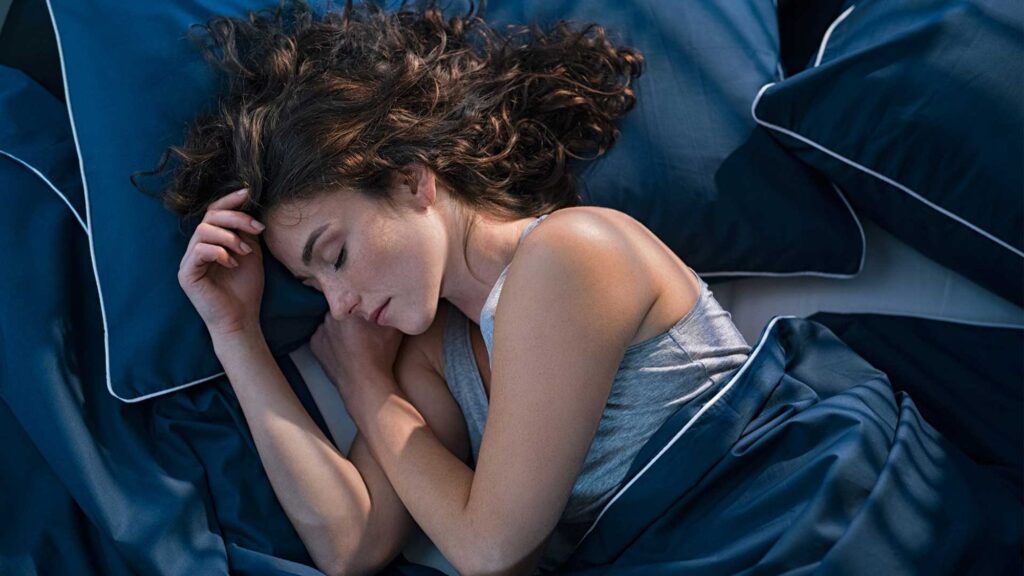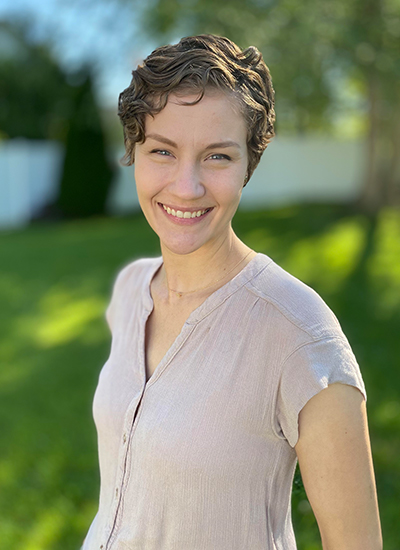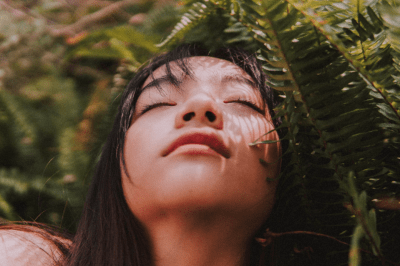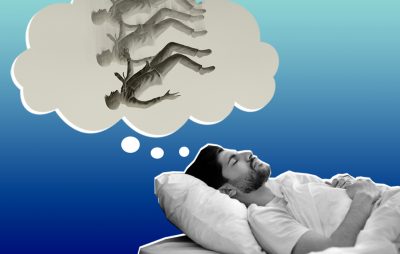
Some nights you might start snoring the minute your head hits your pillow. But other nights might involve more readjusting, thinking about your day, and drifting gradually to sleep. That drift marks the transition from being awake to being asleep, a state called hypnagogia that can provoke the feeling of falling, seeing or hearing things that aren’t there, and other dream-like hallucinations. In this article, we’ll dig into what to expect from the hypnagogic state and what—if anything—you can do about it.
Note: The content on Sleepopolis is meant to be informative in nature, but it shouldn’t be taken as medical advice, and it shouldn’t take the place of medical advice and supervision from a trained professional. If you feel your child may be suffering from any sleep disorder or medical condition, please see your healthcare provider immediately.
Long Story Short
- Hypnagogia, or the hypnagogic state, describes the moments of transition from being awake to falling asleep.
- While in a hypnagogic state, you might experience feelings of weightlessness, falling, or other hallucinations.
- The hypnagogic state is a normal occurrence and doesn’t require treatment. If your symptoms bother you, though, you can ask your healthcare provider how to prevent these experiences.
What Is the Hypnagogic State?
Hypnagogia, or the hypnagogic state, happens as you transition from wakefulness to sleep. (1) (2) During the hypnagogic state, you may feel, hear, and see things that aren’t real. These are sometimes called “hypnagogic hallucinations,” but these experiences are not part of a disorder. They’re considered part of normal sleep functioning, according to a study review published in Journal of Sleep Research in 2022. (1)
“Many areas of the brain are affected by the transition from awake to sleep, including areas that control sensory processing,” says Dr. Chelsie Rohrscheib, PhD, sleep expert and neuroscientist. Researchers studying this phenomenon have found a correlation with certain brain waves and their higher level of activity in the rear part of the brain. (1)
The hypnagogic experience differs from dreaming. Unlike a dream, a hypnagogic state is full of crisp detail and quickly changing images, whereas dream sequences tend to last longer. Although hypnagogia is a natural part of falling asleep, some research suggests it can happen more often if you’re sleep-deprived. (1) However, it’s a common enough occurrence that it’s not usually a cause for concern.
Sleep-related hallucinations are experienced by many people. Recent research found that hypnagogic events occur in 25-35% of the population. It’s more common in younger adults and children. (3)
When Does the Hypnagogic State Happen in the Sleep Cycle?
The hypnagogic state happens when you’re about to shift into light sleep, or stage 1 (N1). (4) We typically sleep in 4 stages that range from light to deep sleep. (4)
The Four Sleep Stages
- N1 (stage 1): light sleep
- N2 (stage 2): deeper sleep
- N3 (stage 3): deepest non-REM sleep
- Rapid-eye-movement (REM): deep sleep in which dreams typically occur
Experts can measure your sleep stages by looking at brain waves on an electroencephalogram (EEG). When you’re awake and alert, beta waves are dominant. As you get drowsy, alpha waves take over. (4) The hypnagogic state occurs as your alpha waves are ramping up, but you haven’t yet reached light sleep. (1)
Effects of Hypnagogia
The hypnagogic state can cause a wide variety of symptoms like the “Tetris effect” and the feeling of falling, which is the most common. (1)
Hypnagogic Jerks
Hypnagogic jerks, also known as hypnic jerks or sleep starts, describe sudden muscle contraction as you fall asleep. Around 70 percent of people experience hypnagogic jerks at least once, but they don’t cause any harm (unless you count scaring the heck out of your sleeping partner). (5)
Hypnic jerks don’t just happen in a hypnagogic state – they can occur in many stages of sleep.
Explosive Head Syndrome
This effect sounds alarming, but explosive head syndrome, or EHS, simply describes hearing an explosively loud sound as you begin to fall asleep. EHS is less common than other hypnagogic phenomena. Some experts lump EHS in with hypnagogic auditory hallucinations, but many describe EHS as much louder. (1)
The Tetris Effect
If you play Tetris before you go to bed, your hypnagogic experiences may resemble the game. Experts found when they studied these events, similar types of games or other visual media before sleep can have an effect on your hypnagogic state. (1)
Hypnagogic Hallucinations
The things you see, hear, and feel during a hypnagogic state are often described as hallucinations, but it’s important to know the difference between hypnagogic hallucinations and the types of hallucinations that can point to mental health or sleep disorders. (1)
Hallucinations are a major symptom of schizophrenia; however, experiencing “hallucinations” during a hypnagogic state is a different phenomenon altogether. With hypnagogic hallucinations, you’re aware that what you see or hear isn’t real. Hypnagogic hallucinations typically occur at night. (6)
Sometimes hypnagogic hallucinations can occur more in sleep disorders like narcolepsy or other medical or mental health conditions like anxiety. But, they can also be triggered by: (1) (7)
- Alcohol consumption
- Substance use
- Medications
- Short sleep duration
If you notice any of these often-prompt hallucinations as you drift off, you can avoid the experience by lessening your intake of alcohol and illicit substances, or speaking with your healthcare provider about your current medications. (5) Practicing good sleep hygiene and a regular sleep schedule may also help.
The most common types of hypnagogic hallucinations are visual, the feeling of falling, and feeling like someone is in the room. The next most common are hearing things, feeling touch, and movement. Hallucinations of taste and smell are the rarest. (1)
If the hypnagogic hallucinations you experience are concerning or upsetting, you can talk to your healthcare provider about it. They can help decipher if anything else is going on and how to tackle the problem.
Inducing Hypnagogia
For some people, hypnagogic states might sound a little frightening, while others are actually curious about how to bring them on and amplify the experiences. “Factors such as stress, sleep deprivation, or certain medical conditions might increase the likelihood of hypnagogic experiences,” says Dr. Danielle Kelvas, MD, a family physician and medical writer. “While it’s not typically induced intentionally, relaxation techniques and certain sleep schedules might increase your awareness of hypnagogia.”
Some have found they can exercise control over their hypnagogia experiences by thinking about a specific topic or event before going to sleep. (1) Experts have found that inducing hypnagogia and then waking yourself can lead to a time of heightened creativity. (8)
Famous Hypnagogia Pioneers
Salvador Dalí induced hypnagogia for its creativity-boosting powers before anyone knew what it was called. He sat in front of a fire and held a large metal key to his chest, with a metal bowl resting on his lap. As he dozed off, his muscles relaxed and the key fell, clattering into the bowl and waking him. Then he painted his hallucinations. (9) Thomas Edison used a similar method, but with a steel ball instead of a key. (10)
Hypnogogia How-To
The next obvious question is: How can you induce hypnagogia? Here are some potential options: (1)
- Hypnosis: One study review found that people going through hypnosis experienced relaxed muscles, slowed breathing, and hand paralysis. They also reported visual hallucinations.
- Multimodal Ganzfeld technique: To experiment with this technique, research participants were asked to sit in a room lit in a reddish tint, listen to waterfall white noise, and sit with their eyes open but covered with halves of ping-pong balls. Survey results showed participants felt this method gave them a hypnagogic experience, but the EEG showed they were still in the awake state.
A wearable device developed by MIT named Dormio delivers sensory stimuli during the hypnagogic state to influence the wearer’s hypnagogic experiences. While Dormio might not induce hypnagogia, it can influence what you experience during dreaming. (11)
The Difference Between Dreams, Nightmares, and Hypnagogic “Waking Dreams”
“Dreams, nightmares, and hypnagogic ‘waking dreams’ are all different,” says Kelvas. “Dreams, as well as nightmares (which are simply distressing dreams), occur primarily during REM (rapid eye movement) sleep, while hypnagogic hallucinations take place during the transition from wakefulness to sleep.” Unlike dreams or nightmares, hypnagogic episodes are often more vivid and sensory, and involve the feeling of movement, sound, or touch, Kelvas explains. (1) (6)
Dreams and nightmares are normally longer than hypnagogic hallucinations. Their content is also more consistent and can be recurring. You’re also more likely to talk in your sleep during a dream than during a hypnagogic episode. (1)
The Last Word
Whether experiencing hypnagogic hallucinations sounds like a delightful playground for your mind or something you’d rather not deal with, the experience is a normal function of your brain and is usually no cause for concern. If your symptoms start to bother you, or you have a hypnagogic event during waking hours, a healthcare provider can help you sort out the possible causes and plan the best way forward.
FAQS
Is hypnagogia the same as lucid dreaming?
Lucid dreaming is not the same as hypnagogia, says Dr. Schafer. “Lucid dreaming refers to the experience of being aware that you’re dreaming during the dream itself, and often even controlling the dream’s events.” (12)
Dr. Rohrscheib adds, “Scientists don’t understand what causes lucid dreaming but we think it occurs because certain areas of the brain that are usually inactive during REM suddenly become active, allowing us to use our working memory and higher cognitive functions.” (12)
Is hypnagogia the same as sleep paralysis?
“Hypnagogia is also not the same as sleep paralysis,” says Dr. Kelvas. “Sleep paralysis is a phenomenon where a person is temporarily unable to move or speak while falling asleep or waking up.” It can sometimes include hypnagogic hallucinations, she adds, but it is a distinct state. (13)
Sleep paralysis is more likely to appear in the transition from sleep to wakefulness, says Dr. Rohrscheib instead of the reverse. It can include hypnagogic-like hallucinations, such feeling a threatening presence in the room, seeing a dark figure, heaviness on the chest, or out-of-body experiences. (13)
Sources
1. Ghibellini R, Meier B. The hypnagogic state: A brief update. Journal of Sleep Research. 2024;32(1):e13719. doi:10.1111/jsr.13719
2. Narcolepsy – Narcolepsy | NHLBI, NIH. Accessed September 14, 2024. https://www.nhlbi.nih.gov/health/narcolepsy#
3. Kryger MH, Roth T, Dement WC, Roth T, eds. Principles and Practice of Sleep Medicine. 6. edition. Elsevier; 2017.
4. Physiology, Sleep Stages – StatPearls – NCBI Bookshelf. Accessed October 14, 2024. https://www.ncbi.nlm.nih.gov/books/NBK526132/
5. Kumar R, Ali SN, Saha S, Bhattacharjee S. SSRI induced hypnic jerks: A case series. Indian Journal of Psychiatry. 2024;65(7):785-788. doi:10.4103/indianjpsychiatry.indianjpsychiatry_207_23
6. Azis M, Ristanovic I, Mittal VA. Hypnagogic and hypnopompic hallucinations: Considerations for clinical high-risk assessment and targets for future research. Schizophrenia Research. 2020;222:514-515. doi:10.1016/j.schres.2020.05.025
7. Sleep Hallucinations – Sleep Education by the AASM. Accessed October 14, 2024. https://sleepeducation.org/sleep-disorders/sleep-hallucinations/
8. Lacaux C, Andrillon T, Bastoul C, et al. Sleep onset is a creative sweet spot. Sci Adv. 2021;7(50):eabj5866. doi:10.1126/sciadv.abj5866
9. Caraccio M, Kryger MH. Salvador Dalí: Hypnagogic Hallucinations in Art. Sleep Health. 2024;9(1):1-2. doi:10.1016/j.sleh.2023.01.009
10. Edison was right: Waking up right after drifting off to sleep can boost creativity | Science | AAAS. Accessed October 14, 2024. https://www.science.org/content/article/edison-was-right-waking-right-after-drifting-sleep-can-boost-creativity
11. Haar Horowitz A, Cunningham TJ, Maes P, Stickgold R. Dormio: A targeted dream incubation device. Consciousness and Cognition. 2020;83:102938. doi:10.1016/j.concog.2020.102938
12. Baird B, Mota-Rolim SA, Dresler M. The cognitive neuroscience of lucid dreaming. Neuroscience & Biobehavioral Reviews. 2019;100:305-323. doi:10.1016/j.neubiorev.2019.03.008
13. Wróbel-Knybel P, Flis M, Rog J, Jalal B, Wołkowski L, Karakuła-Juchnowicz H. Characteristics of Sleep Paralysis and Its Association with Anxiety Symptoms, Perceived Stress, PTSD, and Other Variables Related to Lifestyle in Selected High Stress Exposed Professions. IJERPH. 2022;19(13):7821. doi:10.3390/ijerph19137821
14. Rohrscheib, Chelsie, PhD. Personal Interview. October 16, 2024.
15. Kelvas, Danielle, MD. Personal Interview. October 16, 2024.
16. Ghibellini, Romain. Personal Interview. October 16, 2024.



